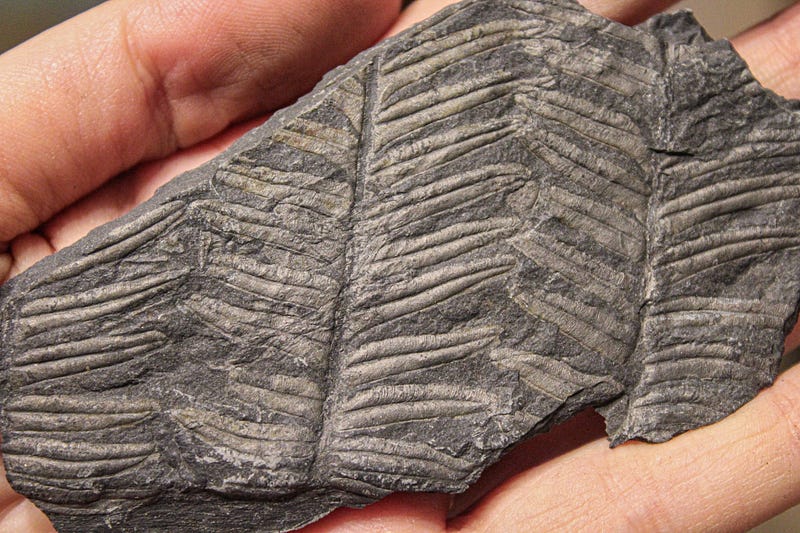Paleobotanists: The Heroes of Climate Change Science
By Paula Hornstein, Biochemistry 2020

“Love to have the opinion of a paleobotanist,” says John Hammond, the fictional founder of Jurassic Park, to Dr. Ellie Sattler in the 1993 film as he invited her to preview his dinosaur park. Little did he know how relevant that statement would be more than 25 years later.
Paleobotanists, like Dr. Sattler, study plant fossils. They use their findings to piece together the evolutionary past of plants and characterize environments of previous ages. Often collaborating with paleontologists and paleobiologists, paleobotanists provide vital insight into life before our era. Their studies can cover a wide range of plantlife, from marine algae to plant pollen.
These studies are used to reconstruct the past, but they can also be used to foretell the future. Many paleobotanists today focus their research on plant and vegetation responses to climate changes of the past in order to predict responses to the dramatic climate change in our near future. In particular, their analyses pertain to divisions of greenhouse states: icehouse, mild greenhouse, and super-greenhouse. Understanding of how plant life reacts to these transitions may offer support to possible solutions to the climate change that threatens life as we know it.
Understanding of how plant life reacts to these transitions may offer support to possible solutions to the climate change that threatens life as we know it.
At least recent four studies of fossil records, summarized in a 2018 Plant Biology review, agree that plant life is remarkably resilient through extreme climate transitions. Plants can migrate, acclimate, and adapt to changing weather conditions. Because DNA is not conserved in fossils from millions of years ago, paleobotanists must have keen eyes for morphological and anatomical traits that can be used to map evolutionary changes over time. Identifying these changes in behavior is complicated. However, if given enough fossil evidence and adequate characterization of the environment, it is possible to map a species’ evolution with respect to the changing climate. This is a meticulous process, as a single geographical site must have an abundance of identifiable fossil records from thousands to millions of years past. When this type of site can be located, such as one in Astartekløft, East Greenland, it is of great value to paleobotanists, as well as their colleagues in mapping environmental resilience.
Because DNA is not conserved in fossils from millions of years ago, paleobotanists must have keen eyes for morphological and anatomical traits that can be used to map evolutionary changes over time.
Paleobotanists also look to an event called the End-Triassic Extinction (ETE) — estimated to have occurred 200 million years ago. There have been five mass extinctions on Earth that humans can trace. The most recognized to people outside the field is the mass extinction that killed the dinosaurs, the End-Cretaceous Extinction. The ETE preceded this event by 150 million years. During the ETE, 75 percent of all known species on the planet became extinct — both terrestrial and aquatic. Although the exact cause of the ETE is unknown, it is known that the Triassic era experienced extremely high carbon dioxide levels. Today, scientists predict that by the year 2250, carbon dioxide levels will have reached ETE levels. Although the pace of global warming is about 280 times faster than that of the Triassic era, the pattern is analogous enough that it provides a window into our possible future.
In their predictions, scientists combine the data from fossil records to contemporary tests of the effects of carbon dioxide on vegetation. These tests often subject different plant life subjects to conditions of increasing carbon dioxide, allowing close monitoring of reactions of plants. These studies are, of course, limited by both space and time. But they offer a contemporary, verifiable understanding of plant life that can be integrated with longitudinal plant fossil data.
Plants demonstrate a resiliency unmatched by any living creature, surviving mass extinctions and often resurfacing stronger than before — granting scientists a foundation for further comprehension of past environments.
One of the largest obstacles in applying these studies is the inability of all humans to conceptualize deep evolutionary history. We can do our best to put the puzzle pieces together, but can never really get the full picture. The work of paleobotanists, however, is critical to even beginning to assemble the pieces. Plants demonstrate a resiliency unmatched by any living creature, surviving mass extinctions and often resurfacing stronger than before — granting scientists a foundation for further comprehension of past environments.
In Jurassic Park, Dr. Sattler asks John, “How much can you know about an extinct ecosystem, and therefore, how could you assume you can control it?” As a paleobotanist, albeit fictional, Dr. Sattler is certainly asking the right questions. For scientists in real life, however, understanding our Earth’s history through its fossilized plant life does provide at least some insight into the mechanisms of climate change, and hopefully, how to counter this global dilemma.
DOI: 10.1146/annurev-arplant-042817–040405
